In the stream of daily affairs, work, household chores, women want to remain attractive and well-groomed. The truth has long been known that the woman’s hands are her calling card.

The beauty industry keeps up to date, is constantly evolving. This trend and nail service did not pass by.
Almost every second representative of the fair sex in hand care procedures resorts to nail extensions. This allows her to not worry about the attractiveness of manicure for a long time, which saves time. In addition, the extension procedure helps to correct the not always attractive shape of the nail plate.
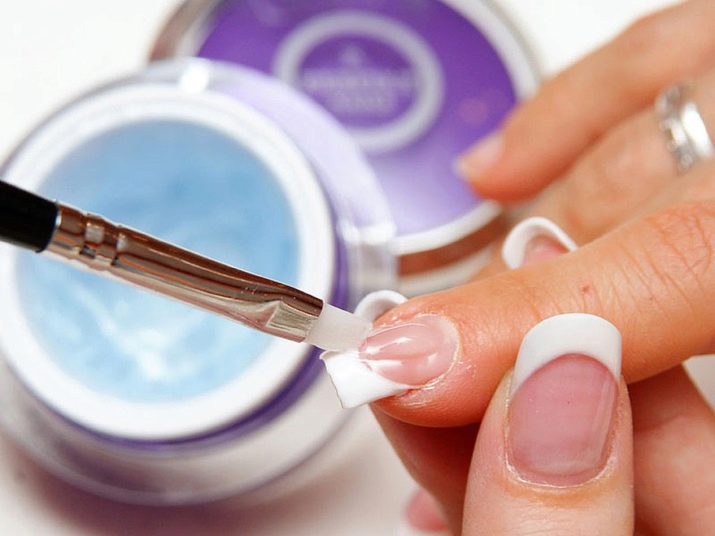
Extension nails require systematic care and correction, which consists in the complete or partial removal and replacement of previously applied artificial material, changing the shape of the nail plate and design.

Features of the procedure
Correction of extended nails occurs in several stages, if it is not a partial repair of cracks or scratches, and depends on the degree of deterioration and damage to the artificial material. The correction procedure includes not only updating the appearance and shape of the nails, but also general hand care.
Correction sequence.
- Before starting the procedure, the hands are thoroughly washed and treated with an antiseptic.
- The previously applied artificial coating is removed with a file or a milling cutter. The depth of cut depends on the type of correction.
- The length of the nail is reduced, and if desired, its shape.
- The cuticle and side rollers are processed using a hardware or combined method (using tweezers and scissors to remove the cuticle).
- Pterygium is removed to avoid further detachment of artificial material.
- The nails are degreased with a primer.
- A basic coating is applied, the surface of the nail plate is leveled and the material is dried (polymerized) in the lamp.
- A new design is created and covered with a finish layer, which must be dried in the lamp for 3 minutes.
- At the end of the procedure, the cuticle of the fingers is treated with moisturizing oil.






When to do it?
When wearing artificial nails, a living nail continues to grow and the border with the applied polymer material becomes more and more obvious. Correction of extended nails should be carried out every 2-3 weeks. The duration of wearing depends on the natural features of the growth of the nail plate, the accuracy of wearing artificial material.

Any mechanical damage, peeling of the extended nails may occur, and when worn for a long time, they are deformed and stitch along the free edge of the nail plate.
Peeling of the material, as a rule, occurs at the side rollers. There can be many reasons for this, but most often it is: improperly selected artificial material, poorly processed surface of the nail before applying the base coat, daily mechanical load on the nail plate.

Types of Correction
There are several types of extensions of extended nails. From the amount of work to be done in the implementation of the correction, small, medium and large corrections are distinguished.
- A small correction is carried out with small damage, chips, peeling, with a small regrowth of a live nail.
- The average correction is carried out when the nail regrowth by 3-5 mm. In this case, partial removal (saw cut) of artificial material is performed with the correction of the shape of the nail and the elimination of damage.
- A large correction includes the complete removal of artificial material, the processing of nails and the application of new artificial material with the construction of a new form of the plate. With this type of correction, nail art and the shape of the nail change.



How to adjust manicure at home?
Correction of the buildup is a rather tedious matter and will require time, special tools, materials and skills.

But even an amateur can do it. The main thing is to follow the stages of correction step by step and show maximum accuracy. Then the result will surely please.
To carry out the correction you will need:
- antiseptic;
- nail files;
- milling cutter;
- a primer;
- base coverage;
- color gel;
- topcoat;
- manicure tools;
- UV lamp;
- moisturizing oil.
There are correction features depending on the polymer with which the extension was made.





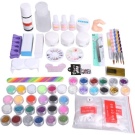
Gel
- Correction of nails with gel extensions starts, as with extensions, with the disinfection of hands and nail plates.
- Next, with a nail file or milling cutter, correctly and accurately, without damaging the cuticle, remove about half of the previously laid artificial material; the cuticle can be pushed back with a stick or make a manicure yourself, removing the excess skin.


- An overgrown living fingernail must also be carefully filed, removing the glossy layer, so that in the future the material to be built up can be tightly fixed.
- After dipping, the nails are treated with a pusher and degreased with a primer.
- Further, artificial material is applied by stretching the drop over the entire surface of the nail and dried in an ultraviolet lamp. It is important to paint over all the voids on the nail plate and give the regular shape to the material to be expanded so that in future the nails look aesthetically pleasing.
- After applying the gel, it is possible to accurately correct flaws with a file and hide unwanted smudges.
- The design of the manicure is updated or completely changed, the final layer of the gel is applied and polymerized in an ultraviolet lamp.

Acrylic
Correction of artificial nails created by acrylic has its own distinctive features. With such correction, a lamp for polymerizing the material is no longer needed, and the work of building and correction is carried out with acrylic powder.

The rest of the correction steps are identical:
- hands are disinfected;
- it is made up of previously applied material;
- the surface of the nail plate is degreased and the acrylic is laid out with a natural pile brush;
- the formed nail should dry for 4 minutes;
- a file is processed on the surface of the nail and polished;
- to obtain a glossy finish, the surface is covered with a topcoat.

Shellac
Shellac for several years has gained great popularity in the beauty industry. It preserves the natural appearance of the nail plate and creates a resistant coating. When using shellac, the nail plate does not grow and lengthen, they only strengthen the nails and give them a beautiful and well-groomed appearance.

Nevertheless, updating the manicure previously made with this material at home is also possible. To do this, you will need a special shellac remover, primer, base coat, colored shellac and top (top coat).
- Before correction, it is necessary to remove the previously laid layer of artificial material. To do this, the glossy layer of the nail is partially filed and a tampon with a shellac remover is applied to the nail plate. After 15 minutes, the varnish can be removed with a wooden stick.
- Next, a file removes the remaining coating, the free edge of the nail is trimmed and a primer is applied.
- The base plate aligns the nail plate, the composition is dried in an ultraviolet lamp.
- A colored gel is applied, a design is created.
- The final step is the finishing coating.
- The cuticle is moisturized with oil.
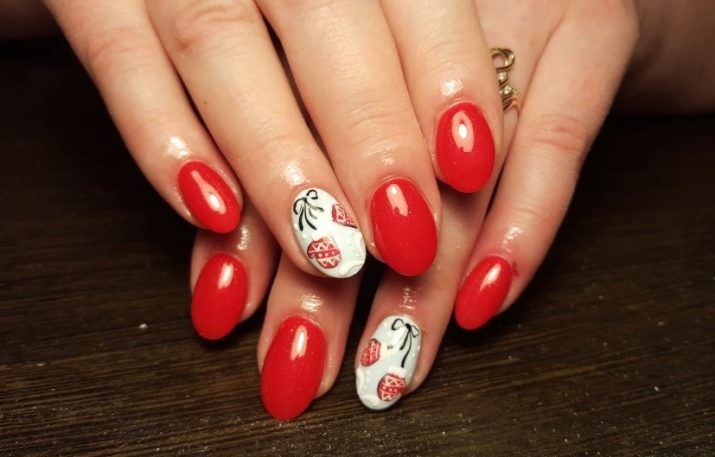
Tips
Before deciding on the procedure for nail extension, it must be understood that after the removal of artificial material, the structure of a living nail will change and become softer, brittle, possibly causing delamination. Polymers to form artificial nails can cause allergies.

During menstruation, pregnant and lactating women are not recommended to carry out building because the body can tear off artificial material from the nail plate.
Extension nails, regardless of the material used, require systematic correction after 2-3 weeks. If you do not make the correction in a timely manner, mechanical damage to the nail and injury due to the overgrown length of the nail plate are possible.
When performing the correction, it is necessary to use personal tools or those that have been reorganized. Before the procedure, it is mandatory to carry out hand disinfection.

When the appearance of detachments, voids under the artificial material, they must be cut out to avoid the ingress of dirt, bacteria and further infection of the nail.
During the correction, the gel is applied to each nail separately and dried in an ultraviolet lamp.
To maintain the quality of the artificial material in its original form, it is necessary to avoid the contact of nails with any substances containing corrosive chemical solvents.
If you urgently need to reduce the length of the nail or change the shape, then you need to do this only with a file for extended nails.
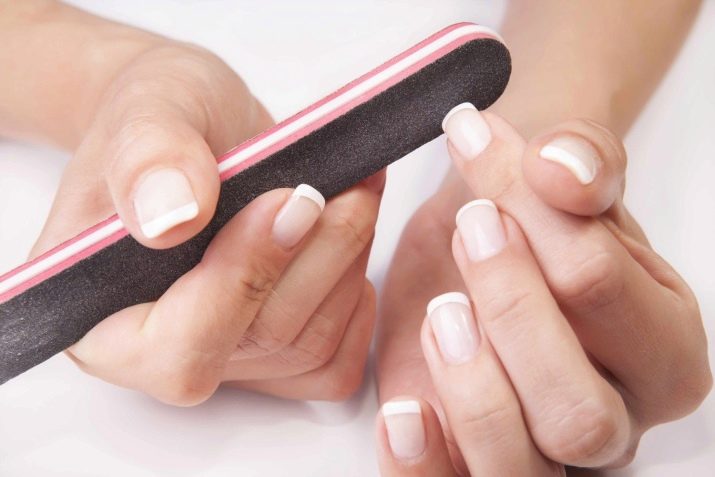
Do not subject extended nails to shock or mechanical damage, as there is a risk of injury to live nails. It is important to remember that the extended nails are not just glued to the nail plate, but can be said to be soldered.
In between corrections, you need to take care of the cuticle, treat with moisturizing oil or cream.
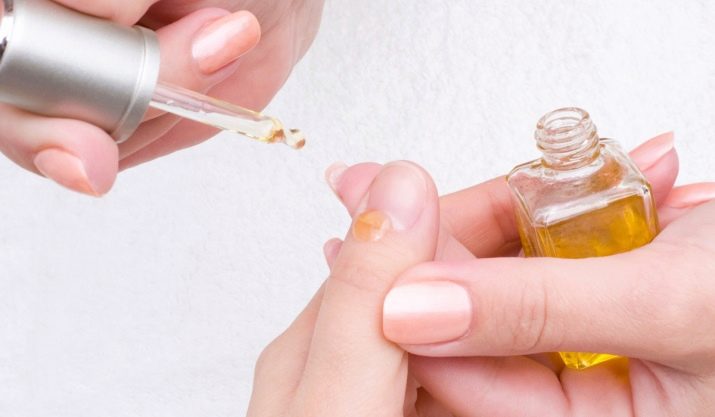
How to make a correction of nails, you will learn from the next video.










